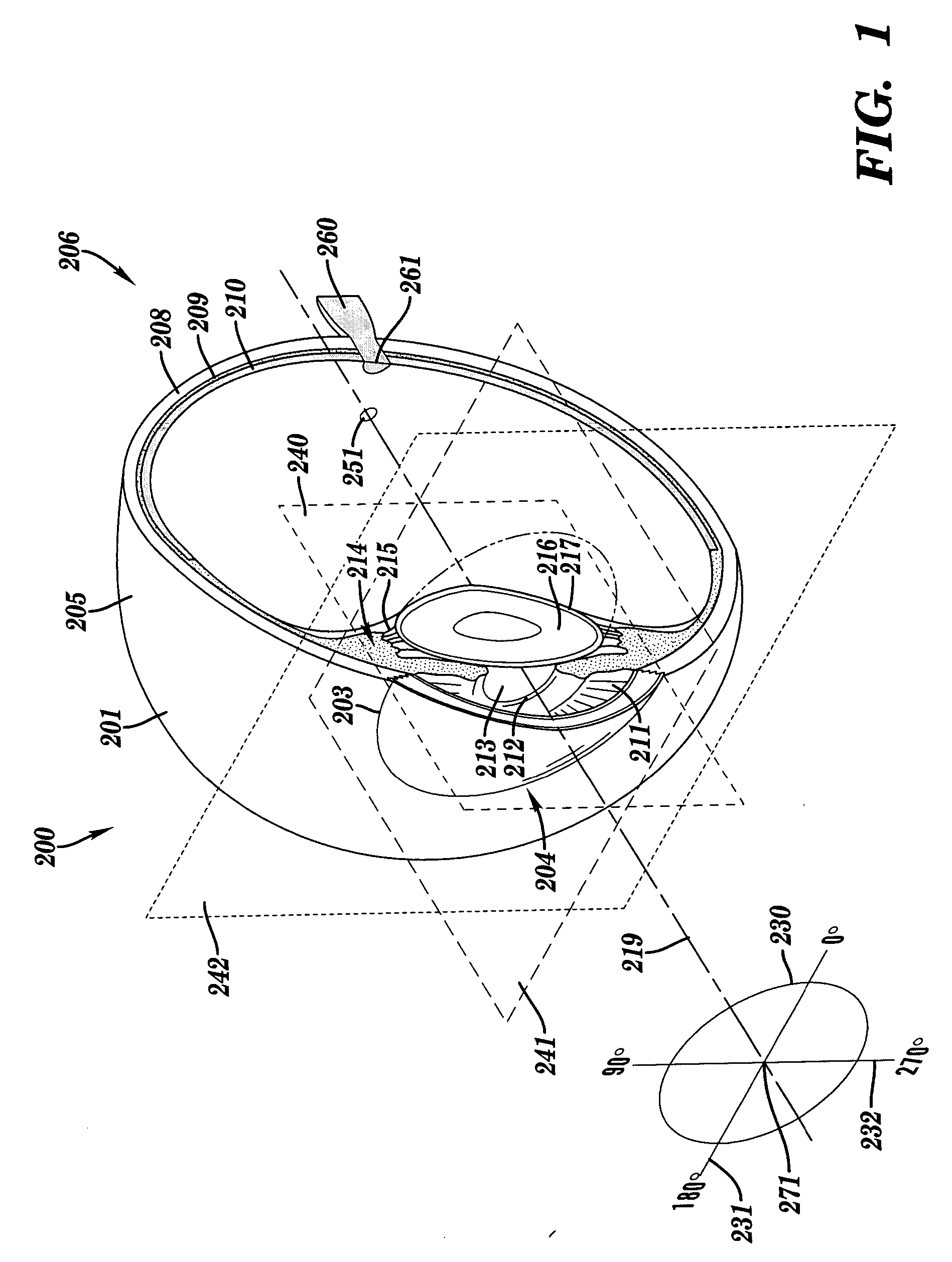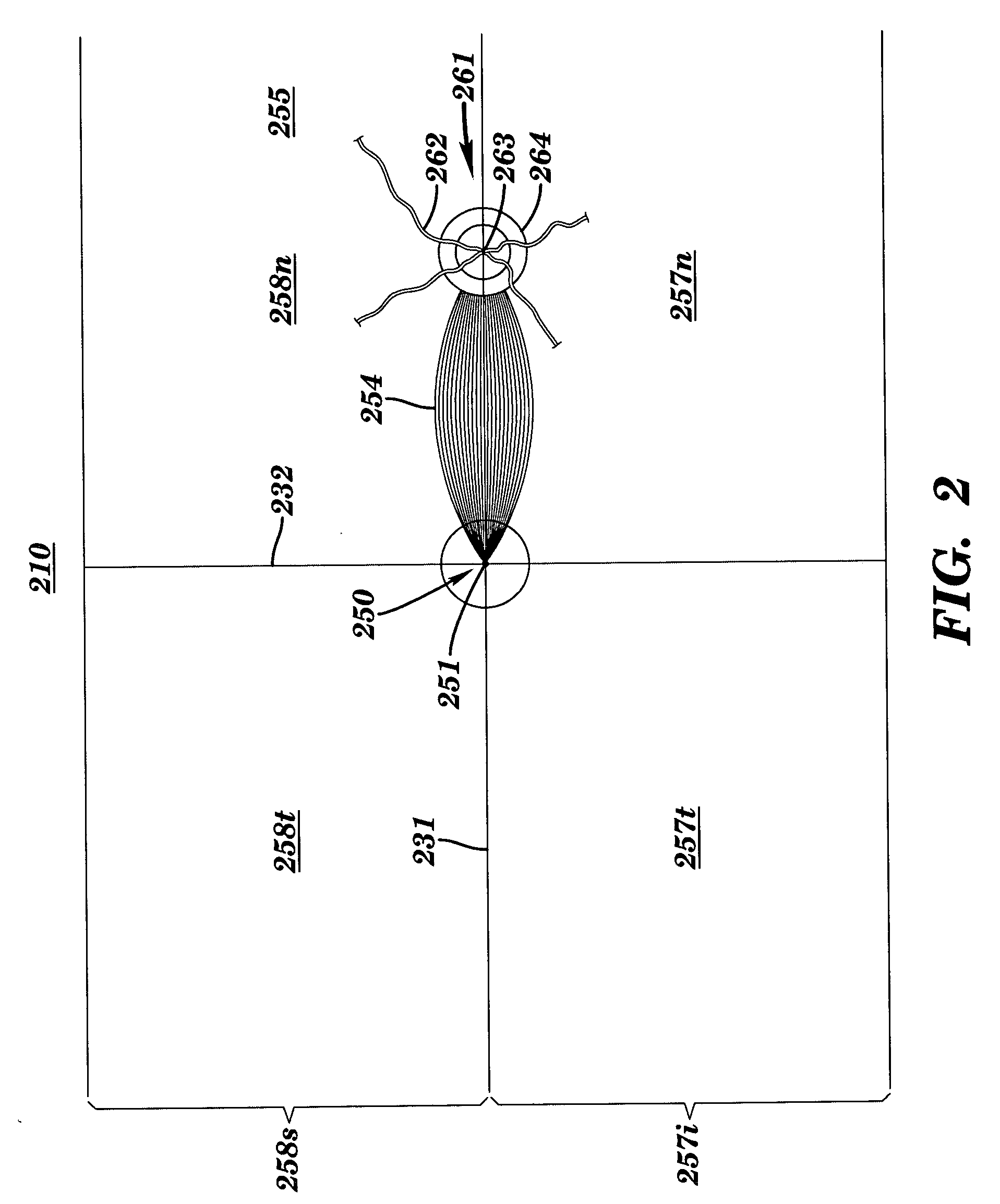Apparatus and method for assessing retinal damage
a retinal damage and retinal technology, applied in the field of retinal damage assessment, can solve the problems of glaucoma primarily destructive of the patient's visual field, optic nerve head atrophia and visual field defects, and it is not practical to test any given point in the grid with a wide range of stimulus intensities, so as to reduce the duration of perimetry testing, the effect of increasing the retinal area and prolonging the tes
- Summary
- Abstract
- Description
- Claims
- Application Information
AI Technical Summary
Benefits of technology
Problems solved by technology
Method used
Image
Examples
Embodiment Construction
3.1 Glaucoma
[0061] As used herein the term glaucoma comprises all pathophysiological states of the human eye presenting with an elevation in IOP and either a visual field defect or optic atrophy, and includes but is not limited to acute angle-closure glaucoma, angle-recession glaucoma, drug-induced glaucoma, hemolytic glaucoma, hemosiderotic glaucoma, juvenile glaucoma, low-tension glaucoma, malignant glaucoma, narrow-angle glaucoma, neovascular glaucoma, normotensive glaucoma, phacolytic glaucoma, phacomorphic glaucoma, pigmentary glaucoma post-surgical glaucoma, primary open-angle glaucoma, primary infantile glaucoma, pseudoexfoliative glaucoma, pupillary block glaucoma uveitic glaucoma, aniridia, aqueous misdirection syndrome, irido-corneal-endothelial syndrome and plateau iris syndrome.
3.2 Ocular Anatomy
[0062]FIG. 1 is a schematic perspective illustration of a human eye 200, set against an anatomical sagittal plane 240, an anatomical axial plane 241 and an anatomical corona...
PUM
 Login to View More
Login to View More Abstract
Description
Claims
Application Information
 Login to View More
Login to View More - R&D
- Intellectual Property
- Life Sciences
- Materials
- Tech Scout
- Unparalleled Data Quality
- Higher Quality Content
- 60% Fewer Hallucinations
Browse by: Latest US Patents, China's latest patents, Technical Efficacy Thesaurus, Application Domain, Technology Topic, Popular Technical Reports.
© 2025 PatSnap. All rights reserved.Legal|Privacy policy|Modern Slavery Act Transparency Statement|Sitemap|About US| Contact US: help@patsnap.com



